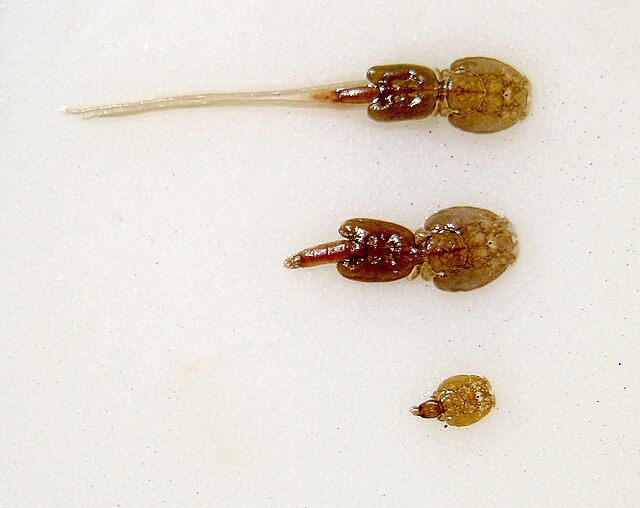The salmon louse is a species of copepod in the genus Lepeophtheirus. It is a sea louse, a parasite living mostly on salmon, particularly on Pacific and Atlantic salmon and sea trout, but is also sometimes found on the three-spined stickleback. It feeds on the mucus, skin and blood of the fish. Once detached, they can be blown by wind across the surface of the sea, like plankton. When they encounter a suitable marine fish host, they adhere themselves to the skin, fins, or gills of the fish, and feed on the mucus or skin. Sea lice only affect fish and are not harmful to humans.
Salmon louse
Nuclear DNA content of salmon louse. Flow cytometry histograms of fluorescent stained (Propidium Iodide, PI) cells of salmon louse mixed with chicken erythrocytes (CEN) and human mono-nucleated cells (MCN) used as internal reference standards. Fluorescence (FL) peaks values on the X-axis are reported in arbitrary units expressed as fluorescence channel numbers (FL value). Values on the Y-axis (counts) refer to the number of nuclei counted per channel. pg= picograms of DNA (haploid, 1C).
Sea lice are copepods of the family Caligidae within the order Siphonostomatoida. They are marine ectoparasites that feed on the mucus, epidermal tissue, and blood of host fish. The roughly 559 species in 37 genera include around 162 Lepeophtheirus and 268 Caligus species.
Pregnant female Lepeophtheirus salmonis on Atlantic salmon, Salmo salar



